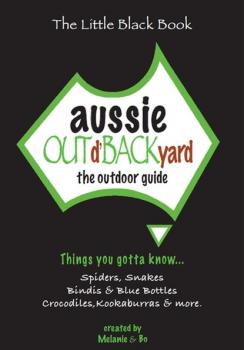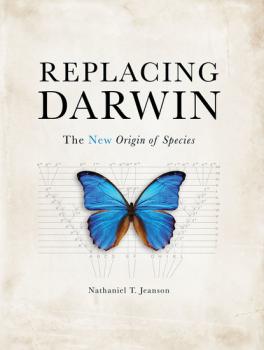Биология
Различные книги в жанре БиологияA Climate for Denial
Why is it that despite overwhelming evidence and fundamental science, some people still don't accept that climate change is real and that human activity is contributing to it?<br /> <br />Is it because the science is not being understood? Is it because it is difficult to accept that humans are capable of changing the climate? Is there a link between climate change scepticism and ideology? Is there a link between the belief in the science and belief in God?<br /> <br />If you know anyone who challenges the science of climate change – or completely denies it's happening at all – then this book is for you, and for them. Don't worry, your friend is human after all, and such behaviour can be explained. A Climate for Denial gives a summary of the reasons your friend is a sceptic.
Australian Good Birding Guide: Tasmania
The second book in the series of comprehensive guidebooks to birdwatching destinations in Australia.<br /> <br />The Tasmanian guide provides a detailed record of birdwatching locations within the State. There is no other such a practical, thorough field aid to successful birdwatching available on the market for Tasmania.<br /> <br />The authors travelled far and wide to check our in person the potential Tasmanian birding spots. This book is the result of their careful site selection. As a minimum, habitat description, site facilities and key avifauna are addressed for each birding site. Personal findings have been cross-checked and augmented with the verified sightings reported online.<br /> <br />Book 1: Australian Good Birding Guide: NSW-ACT<br />Book 3: Australian Good Birding Guide: Victoria
Australian Good Birding Guide: Victoria
This is the third book in the series of comprehensive guidebooks to birdwatching destinations in Australia.<br /> <br />Similarly to the other books in the series, the Victorian guide delivers a detailed record of birdwatching locations within the State. The authors toured from the Southern Ocean-swept shores to all corners of the dry interior to assess and select the best, reasonably accessible birding spots.<br /> <br />Description of each birding site includes, at a minimum, habitat description, site facilities and key avifauna. The authors have cross-checked and supplemented their findings with the verified sightings reported online.<br /> <br />Book 1: Australian Good Birding Guide: NSW-ACT<br />Book 2: Australian Good Birding Guide: Tasmania
Australian Good Birding Guide: NSW-ACT
This is the first of a series of books describing exciting birdwatching locations in Australia. The NSW-ACT Guide is arguably the most comprehensive compendium of birding sites in the State available to date. Not only the standard, well-known locations are covered but also some interesting places known only to a few or newly discovered by ourselves. The book series is intended for both Australian and overseas birders. We hope it will become an essential field companion to a birding enthusiast. In today's time-poor society, the ability to maximise your bird finds in an unfamiliar area in a typically short vacation time available, should be a serious help. For each site, at the minimum, the access details, habitat description, site facilities and key avifauna are addressed. Most data is based on personal records, cross-checked and augmented with the verified sightings reported online.<br /> <br />The book is divided into regions including greater Sydney, Hawkesbury, Hunter region, Illawarra, Southern Highlands, South-East NSW, Mid North Coast, Northern Rivers, Western Slopes and Tablelands, Riverina region, Central West NSW, Far West NSW and Australian Capital Territory. The book is richly illustrated with photographs of birds and bird habitats.<br> <br> Book 2: Australian Good Birding Guide: Tasmania<br />Book 3: Australian Good Birding Guide: Victoria<br /> <br />Tadeusz and Aleksandra Wnorowski were both born and educated in Poland. They have been residing in Australia for the last 10 years and previously lived and worked in New Zealand and South Africa. Tadeusz holds a PhD Degree in Natural Sciences and Alex has a MSc Degree in Biology. Both have recently retired early from their successful work life to concentrate on book writing. Apart from travelling the world and birdwatching at every possible opportunity (Tadeusz is an expert birdwatcher), they are experienced wildlife carers with the NSW Wildlife Information, Rescue and Education Services (WIRES).
Global Warming and Other Trivia
Using a healthy mix of plain language and light entertainment this book examines the facts and myths about the Earth and its climate, as well as the related challenges facing the country and planet in the 21st century and beyond. Presented as a satirical fictional debate, it blends together two streams: a methodical part – centred on the conflict of opinion between the beliefs that global warming is real and the opposite view questioning if such a phenomenon does indeed exist – and a satirical one – involving frequent hilarious exchanges and quips.
Snake Catcher
Tony Harrison has lived the life of a professional snake catcher for twenty years. In this book, he introduces you to the reptiles most commonly encountered in our cities and towns, including some of the most venomous snakes on earth. <br />Tony has spent his whole life surrounded by reptiles. His work and his animals are regularly featured on TV and in movies. That means he has a tale or two to tell. In <i>Snake Catcher</i>, Tony shares entertaining and informative stories, written by award-winning Australian writer, David Blissett. You are part of the action as Tony enters a suburban bedroom to bag a large and lethal Eastern Brown Snake. You will meet Tiger, the Lace Monitor who is afraid of heights. And you will find out what happens when you try to flush a venomous snake down the toilet. <br />However, more than telling great stories and showing great pictures, this book has another purpose. Tony wants to dispel the myth that 'the only good snake is a dead snake.' He shares his insights into some truly fascinating reptiles, and gives common-sense advice about living safely with them.<br /><i>Snake Catcher </i>includes information on:<br />* The most commonly encountered Australian reptiles, complete with stunning full-colour photos.<br />* What to do if you encounter a snake at home or in the bush.<br />* How to discourage dangerous snakes from entering your property.<br />* The benefits of having some snake species living nearby.<br />* How to treat a snake bite.<br />* How to protect your pets from run-ins with snakes.<br />* Some of the rules about keeping reptiles for yourself.
Aussie Out d'Backyard: The Outdoor Guide
Here in Australia we've got some of the worlds most UNIQUE… and most DANGEROUS creatures on the planet!<br /> <br />You may not see KANGAROOS jumping down the street, but you're sure to see plenty of the WILD & WONDERFUL… and NOT just at the Zoo, there's a lot right OUTd'BACKyard!<br /> <br />Whether they're CUTE and CUDDLY… CREEPY CRAWLY, WET and Wild or just WEIRD, there's stuff to know about our Aussie WILDLIFE. The OUTd'BACKyard guide can help you spot what's SAFE and what's NOT… in your own backyard.
Ways to Live in Harmony with Nature
Have you ever wondered how you can maintain your current lifestyle, but not exhaust our planet's resources? In modern times, many of us have environmental knowledge but we lack an understanding of how to apply that knowledge to our everyday lives. Bridging this gap is what has motivated ecological economist Dr Kamaljit Sangha to write this book. Dr Sangha examines how people can make a difference to the environment by proposing little actions at the household scale that can contribute towards saving our planet.<br /> <br />This book examines how to:<br />– Minimise the gap between scientific knowledge and public awareness<br />– Reduce the impact of our actions on our natural environment<br />– Maintain our earth's natural resources<br />– Be happier and healthier by recognising our reliance on Mother Nature and re-establishing our connections with nature.<br /> <br />Dr Sangha believes there are a few, very easy steps that everyone – whether they reside in the city or the country – can take to save money, their mental and physical health, and ultimately our planet.
Replacing Darwin
If Darwin were to examine the evidence today using modern science, would his conclusions be the same? Charles Darwin’s On the Origin of Species , published over 150 years ago, is considered one of history’s most influential books and continues to serve as the foundation of thought for evolutionary biology. Since Darwin’s time, however, new fields of science have immerged that simply give us better answers to the question of origins. With a Ph.D. in cell and developmental biology from Harvard University, Dr. Nathaniel Jeanson is uniquely qualified to investigate what genetics reveal about origins. The Origins Puzzle Comes Together If the science surrounding origins were a puzzle, Darwin would have had fewer than 15% of the pieces to work with when he developed his theory of evolution. We now have a much greater percentage of the pieces because of modern scientific research. As Dr. Jeanson puts the new pieces together, a whole new picture emerges, giving us a testable, predictive model to explain the origin of species. A New Scientific Revolution Begins Darwin’s theory of evolution may be one of science’s “sacred cows,” but genetics research is proving it wrong. Changing an entrenched narrative, even if it’s wrong, is no easy task. Replacing Darwin asks you to consider the possibility that, based on genetics research, our origins are more easily understood in the context of . . . In the beginning . . . God, with the timeline found in the biblical narrative of Genesis. There is a better answer to the origins debate than what we have been led to believe. Let the revolution begin! About the Author Dr. Nathaniel Jeanson is a scientist and a scholar, trained in one of the most prestigious universities in the world. He earned his B.S. in Molecular Biology and Bioinformatics from the University of Wisconsin-Parkside and his PhD in Cell and Developmental Biology from Harvard University. As an undergraduate, he researched the molecular control of photosynthesis, and his graduate work involved investigating the molecular and physiological control of adult blood stem cells. His findings have been presented at regional and national conferences and have been published in peer-reviewed journals, such as Blood, Nature, and Cell . Since 2009, he has been actively researching the origin of species, both at the Institute for Creation Research and at Answers in Genesis.
The Fossil Book
Fossils have fascinated humans for centuries. From the smallest diatoms to the largest dinosaurs, finding a fossil is an exciting and rewarding experience. But where did they come from, and how long have they been around? These and many other questions are answered in this remarkable book. The Fossil Book will teach you about: The origin of fossils How to start your own fossil Collection What kinds of fossils can be commonly found The age of fossils How scientists find and preserve fossils How to identify kinds of fossils How the flood affected fossil formation The Geologic Column Diagram The difference between evolutionists’ and creationists’ views on fossils The “four Cs” biblical creation The different kinds of rocks fossils are found in coal and oil formation Learning about fossils, their origins, and how to collect them can be both fun and educational. The abundance of both marine and land fossils and the locations they are found in is a fascinating subject for students of all ages and has been studied by scientists and laypersons alike for many years. Learn what all the excitement is about!









